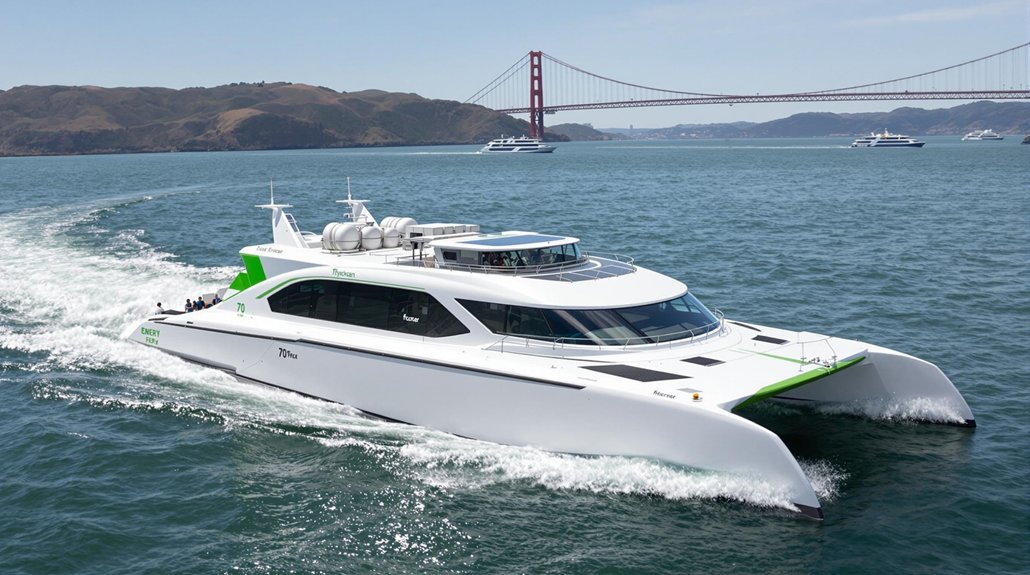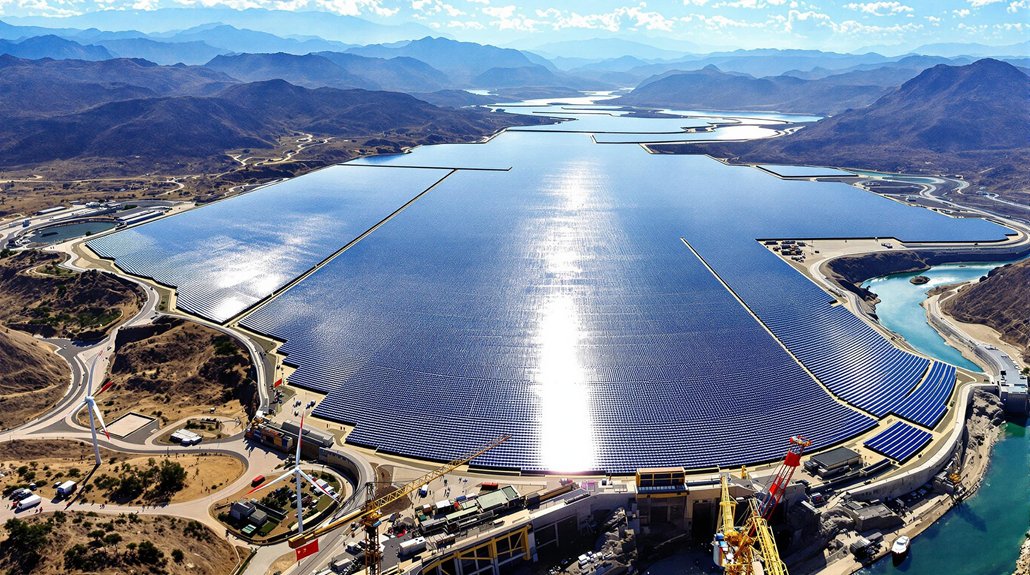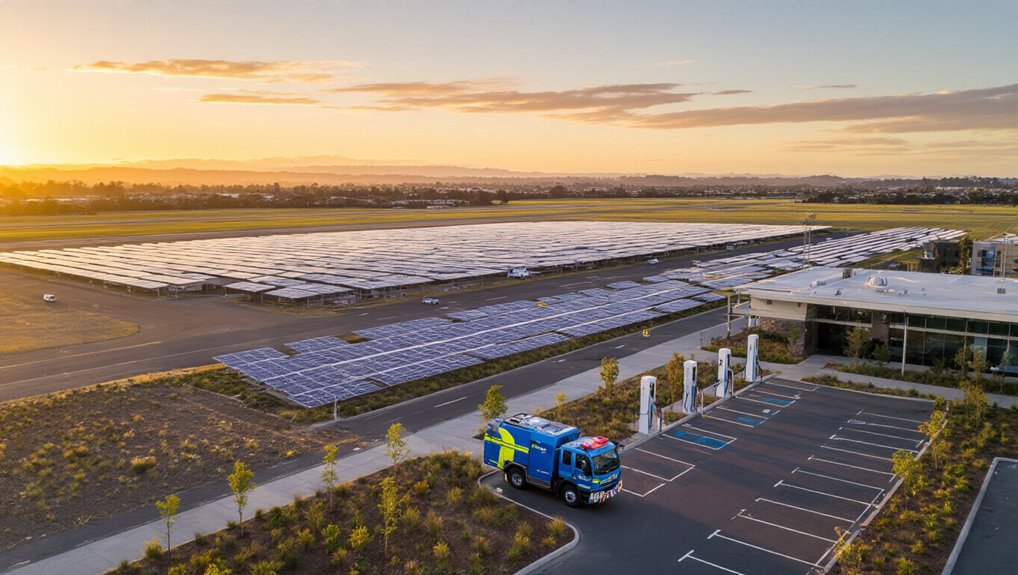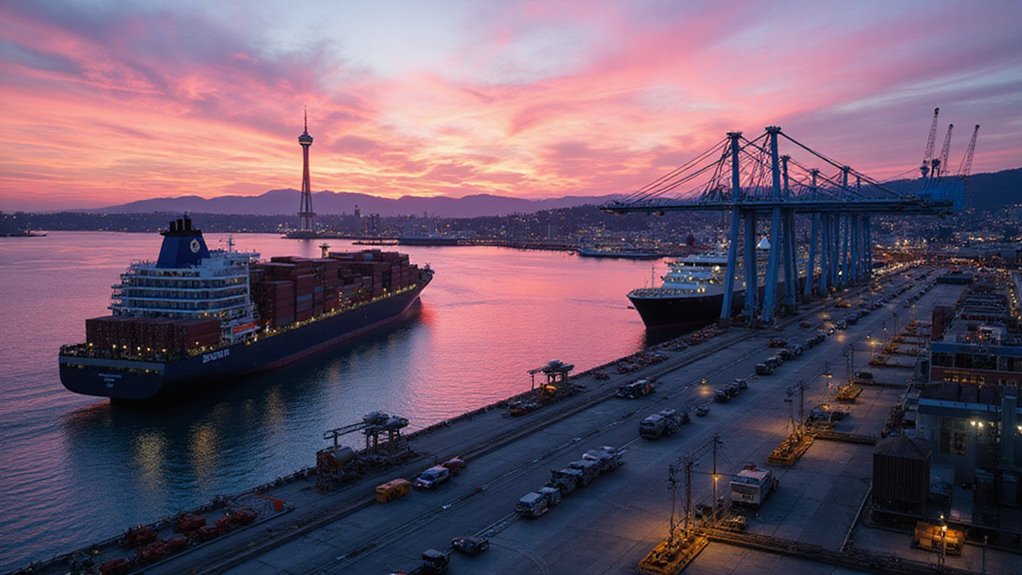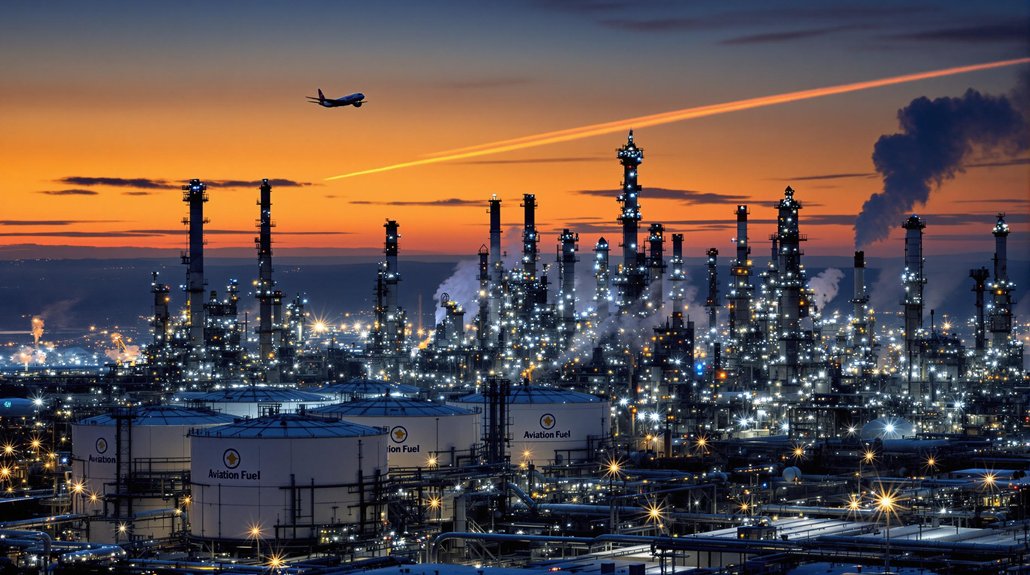The world’s first commercial hydrogen fuel cell ferry just hit San Francisco Bay waters. This 70-foot catamaran carries 75 passengers with zero emissions, powered by 360kW fuel cells and storing 246kg of hydrogen. It goes 300 nautical miles at 15 knots – no charging needed. Developed by SWITCH Maritime and partners with a $3 million government grant. Maritime experts are watching closely; this tech could transform global shipping forever.
While most of the maritime industry still chugs along belching diesel fumes, a revolutionary 70-foot catamaran just made waves in California. This isn’t your grandfather’s ferry. It’s a 75-passenger, zero-emissions vessel that runs entirely on hydrogen fuel cells. No diesel. No smoke. No kidding.
The vessel represents a first-of-its-kind achievement: the world’s first commercial hydrogen fuel cell passenger ferry. Equipped with 360 kW Cummins fuel cells and a 246 kg hydrogen storage capacity, this maritime marvel can travel approximately 300 nautical miles at speeds up to 15 knots. There’s also a 100 kWh lithium-ion battery system because, well, redundancy matters when you’re floating.
This wasn’t a solo project. All American Marine built it. SWITCH Maritime owns it. Zero Emissions Industries, BAE Systems, and Incat Crowther contributed critical technology and design elements. Money talks, and in this case, it spoke through private capital from SWITCH and a $3 million grant from California Air Resources Board.
The ferry does something remarkable. It operates without spewing greenhouse gases. With hydrogen from water electrolysis, the vessel produces zero emissions when powered by renewables. Gone are the days when going green meant compromising on performance. This vessel proves you can have both. The Bay Area Water Emergency Transportation Authority will operate the Sea Change during a six-month pilot program.
For the maritime industry, this isn’t just another boat launch. It’s a proof of concept. Regulatory feasible? Check. The US Coast Guard gave their blessing. Commercially viable? They’re working on it. The vessel eliminates shoreside charging infrastructure needs, which is pretty convenient.
SWITCH plans to build an entire fleet of these zero-emissions vessels. The implications stretch beyond California’s shores. This innovation follows similar successes with hydrogen-powered cargo ships already operating in European waters between the Netherlands and Germany. This technology could transform short-sea shipping globally and accelerate the maritime sector’s energy shift.
Let’s be real. The shipping industry needs to clean up its act to meet the International Maritime Organization’s net-zero emissions target by 2050. This catamaran isn’t just making waves—it’s charting a course toward that future. And that’s no small feat in an industry known for moving slowly on everything except the water.
